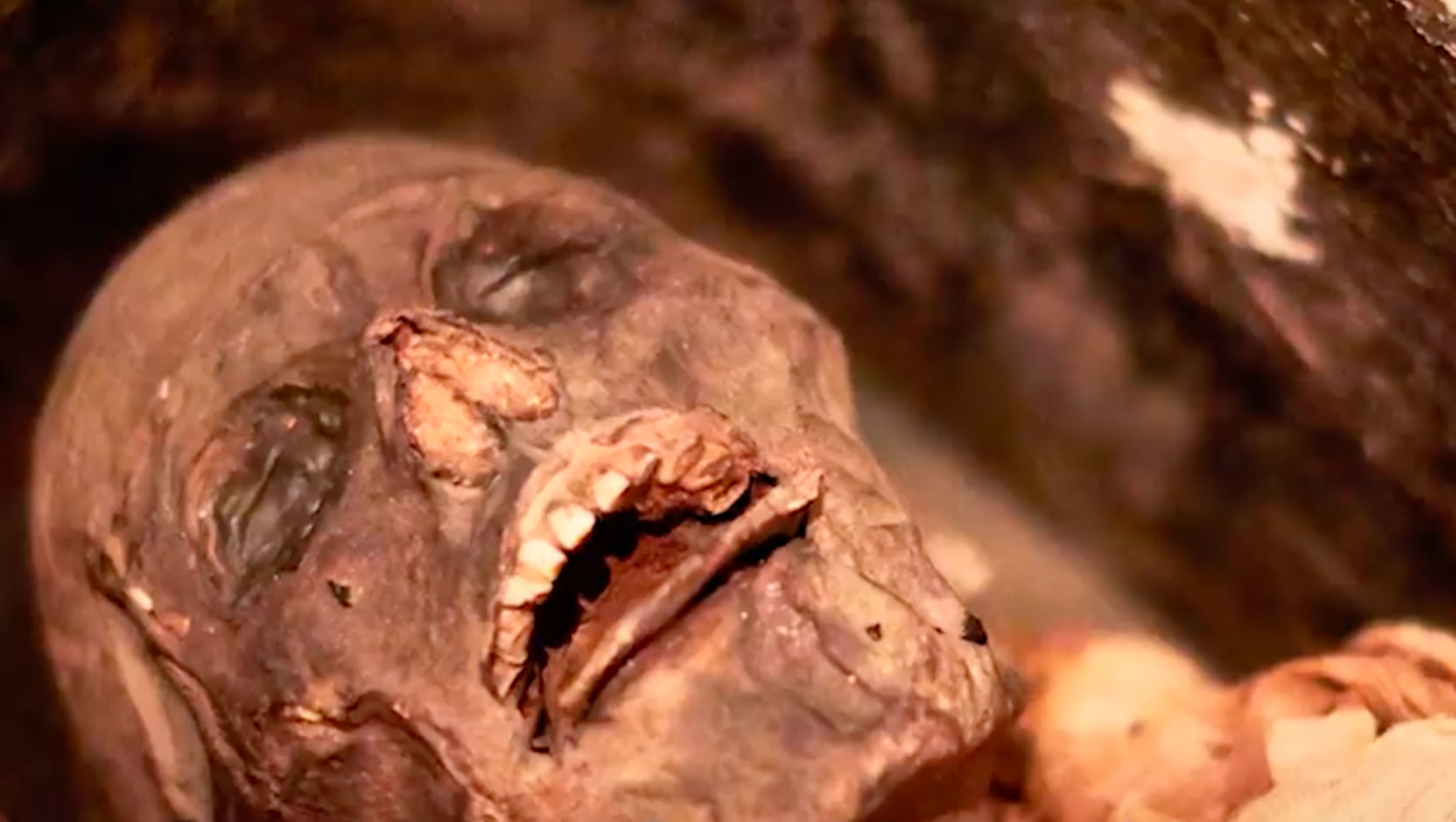Create a free profile to get unlimited access to exclusive videos, sweepstakes, and more!
The dead speak: 3D printing brings Egyptian mummy's voice back to life after 3,000 years

The dead can speak to us through artifacts and human remains, but a mummy is literally talking to us now.
Archaeologists haven't been able to raise the deceased (yet), but a U.K. research team from Royal Holloway, the University of York, and the Leeds Museum has been able to bring the vocal tract of the mummified Egyptian priest Nesayamun to life. CT scans and digital reconstruction created a model that could be 3D-printed. The team used their device to synthesize a sound that allows us to hear what the priest would have sounded like, so his voice is no longer buried with him.
The team has produced a vowel sound that sounds like "beh," which doesn't say much, but according to The Telegraph, they are looking into using the same technology to eventually make that voice speak in words and sentences that will echo from the distant past.
“The sound of a vocal tract from the past has been synthesised to be heard again in the present, allowing people to engage with the past in completely new and innovative ways,” said archaeologist John Schofield, co-author of a study recently published in Scientific Reports.
While the tongue and palate have long since disintegrated, most of the soft tissue in Nesyaumn’s vocal tract still remained intact in his immaculately preserved body — intact enough for him to “speak” again. Nesyamun’s vocal tract was so well preserved that it showed up well enough on a CT scan to give the researchers an image clear enough to 3D-print what they call the Vocal Tract Organ. This device has an artificial larynx that can be controlled by the user.
While the archaeologists couldn't make Nesyamun sing a cover of "Walk Like an Egyptian," they have been able to synthesize the one sound, formed from the existing shape of his mummified vocal tract. You can listen to it in the Telegraph video above.
“The synthesized vowel sound based on the precise dimensions of his unique vocal tract is here compared to modern vowels as proof of method and to demonstrate future research potential,” Schofield and colleagues said, adding that “[Nesyamun’s] voice was an essential part of his ritual duties which involved spoken as well as sung elements.”
Nesyamun was an Egyptian priest who lived in Thebes around the 12th century B.C.E. In life, his voice was an instrument for rituals that took place in incense-filled temples. Priests were of a high enough status to be able to afford mummification when they died. But we can really only imagine what Nesyamun sounded like when he was chanting or singing.
Though preserved vocal tracts are rare, there have been many attempts at reviving the music of ancient Egypt through the study of instruments used back then, and papyri that show scenes of music and dancing — though we may never really know how accurate they are. Scientists are a still trying to figure out what the hieroglyphic language sounded like when spoken. Before Nesyamun can speak in sentences, the team will have to make sure the pronunciations are legit. For now, the best you can do to travel that far back in time is try to listen to one of the many iterations of this music and imagine Nesyamun’s voice singing to it.
Honestly, he doesn’t sound too pleased to be woken up after 3,000 years.
(via Scientific Reports)














